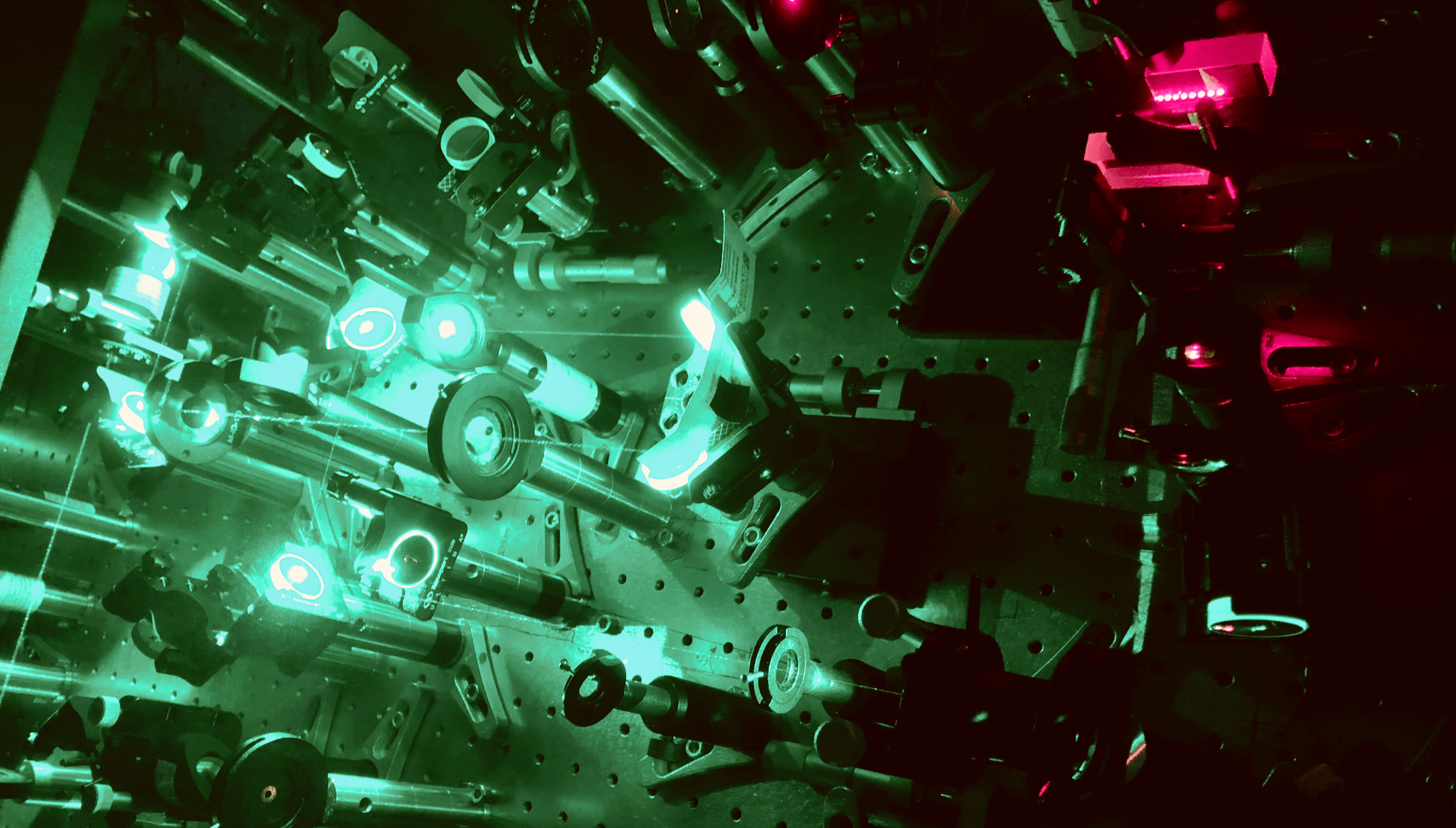Exciting moments on the edge

A detail of the advanced magneto-optical set-up used to probe the properties of the phosphorene nanoribbons
For the first time, researchers have demonstrated that phosphorene nanoribbons – thin pieces of black phosphorus, only a few nanometres wide – exhibit both magnetic and semiconducting properties at room temperature. This makes phosphorene nanoribbons a unique class of materials that challenges conventional views on magnetic semiconductors, and could provide a stepping stone to unlocking new quantum technologies.
The work, published in Nature, was executed by a consortium of researchers from the University of Cambridge, University of Warwick, University College London, Freie Universität Berlin and HFML-FELIX.
Magnetism at room temperature
Scientists have long suspected that low-dimensional phosphorene nanoribbons might exhibit unique magnetic and semiconducting properties, but proving this has been difficult. Using a variety of experimental techniques in an applied magnetic field, researchers were able to demonstrate the remarkable magnetic behaviour of phosphorene nanoribbons at room temperature and show how these magnetic properties can interact with light. Under relatively weak magnetic fields (<1 Tesla) the phosphorene nanoribbons surprisingly stand at attention in solution almost like iron filings arrange themselves around a magnet. Furthermore, when deposited in thin films they can display macroscopic magnetic behaviour akin only to that of classic magnetic metals such as iron and nickel.
Living on the edge
Most excitingly, it was discovered that in addition to these magnetic properties, phosphorene nanoribbons host excited states on the magnetic edge of the nanoribbon, where it interacts with atomic vibrations (phonons) that are normally not allowed in a regular bulk crystal of black phosphorus. This unusual interaction allows the nanoribbons to uniquely couple magnetic, optical and vibrational properties on its one-dimensional edge. These findings are particularly significant as they mark the first experimental validations of the predicted, but difficult to observe, magnetic properties of phosphorene nanoribbons, without requiring low temperatures.
Future work
What stands out the most about this research is its potential to influence multiple avenues of science and technology. This research could enable new routes to spintronic devices, which use electron spin instead of charge to enable novel computing technologies such as scalable fabrication for quantum devices, flexible electronics and next generation transistors. The next steps of this work involve finding ways to study the coupling of magnetism with light and vibrations on the edge of these ribbons and exploring their potential to develop entirely new device concepts.
Link to the paper: Magnetically and optically active edges in phosphorene nanoribbons
Research contact: Peter Christianen
Credit photo: Raj Pandya